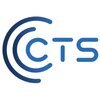Filter interviews by
IRON TRIANGLE LIMITED (BACK BONE OFFICE) QC Engineer Interview Questions and Answers
IRON TRIANGLE LIMITED (BACK BONE OFFICE) QC Engineer Interview Experiences
1 interview found
I applied via Referral and was interviewed before Feb 2022. There were 2 interview rounds.

(3 Questions)
- Q1. Quality related questions ask to me
- Q2. How many years your experience in qaqc
- Q3. What about do u in qaqc
Interview Preparation Tips
Top trending discussions






Interview questions from similar companies

QC Engineer Interview Questions & Answers
Megha Engineering & Infrastructuresposted on 23 Mar 2022
I applied via Job Fair

(1 Question)
- Q1. Salary Discussion My degisnation QC Engineer
Interview Preparation Tips

I applied via Naukri.com and was interviewed before Oct 2019. There was 1 interview round.
Interview Questionnaire
2 Questions
- Q1. Different between ss304 , 316, 309 material , Pwht purpose, regards codes
- Ans.
Explanation of differences between ss304, 316, 309 materials and the purpose of PWHT in regards to codes.
SS304 is a basic stainless steel with good corrosion resistance, SS316 has higher corrosion resistance and is often used in marine environments, SS309 is used for high-temperature applications
PWHT (Post Weld Heat Treatment) is used to relieve residual stresses and improve material properties after welding
Codes such ...
- Q2. Molybdenum is the difference in 304 and 316, 309 using in dissimilar job, Pwht purpose stress relieving, Asme sec 8, 9, 2,5 B31.3
- Ans.
Molybdenum's role in 304, 316, 309 dissimilar jobs, PWHT for stress relief, ASME Sec 8, 9, 2.5, B31.3
Molybdenum improves corrosion resistance in stainless steel
304 contains 8-10.5% nickel and 18-20% chromium, while 316 contains 10-14% nickel and 16-18% chromium
309 is used for dissimilar welding of stainless steel to carbon or low-alloy steel
PWHT is used to relieve residual stresses in welded components
ASME Sec 8, 9, 2....
Interview Preparation Tips

Graduate Engineer Trainee (Get) Interview Questions & Answers
Worleyposted on 5 Dec 2024
I applied via campus placement at BRACT's Vishwakarma Institute of Information Technology, Pune and was interviewed in Nov 2024. There were 3 interview rounds.
Basic Aptitude Questions Reasoning & Verbal Ability
How is culture at IT Industries
(12 Questions)
- Q1. What are the tensile forces acts on material
- Ans.
Tensile forces are forces that stretch or pull materials apart.
Tensile forces act in the opposite direction of compressive forces
Examples of tensile forces include stretching a rubber band or pulling on a rope
Tensile strength is a measure of a material's ability to withstand tensile forces
- Q2. Write all formulas you know of Fluid Mechanics
- Ans.
Formulas in Fluid Mechanics
Bernoulli's equation: P + 0.5ρv^2 + ρgh = constant
Continuity equation: A1v1 = A2v2
Navier-Stokes equation: ρ(∂v/∂t + v∇v) = -∇P + μ∇^2v + ρg
Ideal gas law: PV = nRT
Poiseuille's Law: Q = πr^4(ΔP)/(8ηL)
- Q3. Laws of thermodynamics
- Ans.
The fundamental laws of thermodynamics govern the behavior of energy in systems.
First Law of Thermodynamics: Energy cannot be created or destroyed, only transferred or converted.
Second Law of Thermodynamics: The entropy of an isolated system will always increase over time.
Third Law of Thermodynamics: As temperature approaches absolute zero, the entropy of a system approaches a minimum value.
Examples: A car engine conve...
- Q4. What is Fouriers Law write its equation
- Ans.
Fourier's Law describes the flow of heat through a material.
Fourier's Law states that the rate of heat transfer through a material is directly proportional to the negative gradient of temperature and the area perpendicular to the direction of heat flow.
The equation for Fourier's Law is q = -k * A * (dT/dx), where q is the heat transfer rate, k is the thermal conductivity of the material, A is the cross-sectional area, ...
- Q5. Explain Iron Carbon phase diagram
- Ans.
The Iron-Carbon phase diagram illustrates the phases and microstructures of iron-carbon alloys as a function of temperature and composition.
Shows the phases of iron and carbon at different temperatures and compositions
Includes regions for austenite, ferrite, cementite, and pearlite
Critical points such as eutectic point and eutectoid point are marked
Used to predict the microstructure of steel based on composition and he
- Q6. Stress Strain Curve Explain
- Ans.
The stress-strain curve shows the relationship between stress (force applied) and strain (resulting deformation) in a material.
The curve typically consists of three main regions: elastic deformation, plastic deformation, and fracture.
In the elastic region, the material deforms elastically and returns to its original shape when the stress is removed.
The plastic region is where permanent deformation occurs, but the mater...
- Q7. Calculate SFD & BMD
- Ans.
SFD and BMD are calculated using equations of equilibrium and relationships between load, shear force, and bending moment.
Calculate reactions at supports using equations of equilibrium
Determine the shear force at different points along the beam by considering the applied loads and reactions
Calculate the bending moment at different points by integrating the shear force diagram
Plot the SFD and BMD based on the calculated...
- Q8. How to Calculate velocity of fluid flowing through pipe
- Ans.
Velocity of fluid flowing through a pipe can be calculated using the formula Q = A * V, where Q is the flow rate, A is the cross-sectional area of the pipe, and V is the velocity of the fluid.
Calculate the cross-sectional area of the pipe using the formula A = π * r^2, where r is the radius of the pipe.
Determine the flow rate (Q) of the fluid, which is typically measured in cubic meters per second (m^3/s) or liters per...
- Q9. What is Difference between entropy and enthalpy
- Ans.
Entropy is a measure of disorder or randomness in a system, while enthalpy is a measure of the heat energy in a system.
Entropy is a thermodynamic property that measures the amount of energy in a system that is not available to do work.
Enthalpy is a thermodynamic property that measures the total heat content of a system.
Entropy increases in irreversible processes, while enthalpy remains constant.
Entropy is denoted by S,...
- Q10. Draw Refrigeration Cycle Graph
- Ans.
The Refrigeration Cycle graph shows the process of cooling a space by transferring heat from inside to outside.
The cycle starts with the refrigerant entering the compressor as a low-pressure gas.
The refrigerant is compressed, raising its temperature and pressure, before entering the condenser where it releases heat to the surroundings.
After losing heat, the refrigerant becomes a high-pressure liquid and flows into the ...
- Q11. Draw vapour absorption cycle graph
- Ans.
The vapor absorption cycle graph shows the relationship between pressure, temperature, and enthalpy during the process.
The graph typically shows pressure on the y-axis and temperature on the x-axis.
It includes lines representing the various stages of the cycle such as evaporation, absorption, and desorption.
The enthalpy values at different points in the cycle can also be plotted on the graph.
Example: The graph will sho...
- Q12. Draw Rankine otto & diesel cycle graph
- Ans.
The Rankine, Otto, and Diesel cycle graphs are commonly used in thermodynamics to analyze different types of heat engines.
The Rankine cycle is used in steam power plants and consists of four processes: heat addition, isentropic expansion, heat rejection, and isentropic compression.
The Otto cycle is used in spark-ignition engines and consists of four processes: isentropic compression, constant volume heat addition, isen...
Interview Preparation Tips
- Strength of materials
- Thermodynamics
- Heat Transfer
- Fluid Mechanics
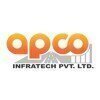
Quaity Control Engineer Interview Questions & Answers
Apco Infratechposted on 9 Jan 2025
I applied via Approached by Company and was interviewed before Jan 2024. There were 2 interview rounds.
(2 Questions)
- Q1. Job related technical discussion.
- Q2. Quality Lab me Kaun kaun se test hote hain.
(3 Questions)
- Q1. Abhi ap kis place me posted the.and kis position per work kar rahe the.
- Q2. Kitne salary mil rahi thi and kisi bhi place me chale jaoge.
- Q3. Ap yahan kitni salary lengen this place per chale jayenge
Interview Preparation Tips
- Field Work
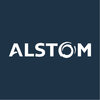
Graduate Engineer Trainee (Get) Interview Questions & Answers
Alstom Transportationposted on 20 Aug 2024
I applied via Campus Placement and was interviewed in Jul 2024. There were 4 interview rounds.
All aptitude, verbal questions
Current affair topics
(2 Questions)
- Q1. Projects based question
- Q2. Favourite subject related questions..decent knowledge on one's core is enough
(2 Questions)
- Q1. Achievements and regrets
- Q2. Family and educational background
Interview Preparation Tips

Production Engineer Interview Questions & Answers
ABCI Infrastructuresposted on 16 Oct 2024
(2 Questions)
- Q1. Hajajakakakk sjs skskse sksksjs dd r d r d. E
- Q2. Bsn s s d d d d. S d d. nsnsjsjsjsj
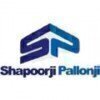
Service Engineer Interview Questions & Answers
Shapoorji Pallonji Groupposted on 29 May 2024
I applied via Approached by Company and was interviewed in Apr 2024. There was 1 interview round.
(22 Questions)
- Q1. Service and brekdown
- Q2. Oil, service and P D A
- Q3. Excavator and hydrulic
- Q4. Service and maintenance
- Q5. How guide for customer, and how problems solved
- Ans.
I guide customers through troubleshooting steps and work with them to solve technical problems efficiently.
Listen to the customer's issue and ask clarifying questions to understand the problem
Provide clear instructions and guidance on troubleshooting steps
Demonstrate patience and empathy while working with the customer
Offer alternative solutions if initial troubleshooting steps do not resolve the issue
Follow up with th...
- Q6. Communication skills
- Q7. And teamwork is most important
- Q8. I lerned more more experience
- Q9. How growth the marketing
- Ans.
Marketing growth can be achieved through various strategies such as digital marketing, social media campaigns, partnerships, and targeted advertising.
Utilize digital marketing channels such as SEO, SEM, and email marketing to reach a wider audience
Create engaging social media campaigns to increase brand awareness and attract new customers
Form partnerships with complementary businesses to expand reach and access new mar...
- Q10. I have more improve for my self
- Q11. Create a more new things
- Q12. All or equalitys
- Q13. Going on good things
- Q14. Good relationship or stuffs and customer
- Q15. I lerned the more knowledge
- Q16. Target the goals
- Q17. Displane the work and
- Q18. Efforts for work
- Q19. Managing the all problms
- Q20. Work is my passion
- Q21. All employees my family
- Q22. This is my passion and profession
Interview Preparation Tips
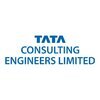
Technical round and one by one person having questing and forward to answers
(2 Questions)
- Q1. Regarding piping
- Q2. I have done piping also do then

Graduate Engineer Trainee (Get) Interview Questions & Answers
Tata Technologiesposted on 10 Jun 2024
(2 Questions)
- Q1. Various designs considerations
- Ans.
Design considerations play a crucial role in the success of a project or product.
Consider user experience and usability
Think about scalability and flexibility
Ensure security and privacy measures are in place
Take into account cost and resource constraints
- Q2. Type of defects in plastic
- Ans.
Common defects in plastic include bubbles, warping, sink marks, and flash.
Bubbles: trapped air pockets in the plastic
Warping: deformation of the plastic due to uneven cooling
Sink marks: depressions on the surface caused by uneven cooling or thick sections
Flash: excess material around the edges of the mold
Cad test (surfacing and part modelling)
Interview Preparation Tips
IRON TRIANGLE LIMITED (BACK BONE OFFICE) Interview FAQs
Tell us how to improve this page.
IRON TRIANGLE LIMITED (BACK BONE OFFICE) Interviews By Designations
- IRON TRIANGLE LIMITED (BACK BONE OFFICE) Deputy Project Manager Interview Questions
- IRON TRIANGLE LIMITED (BACK BONE OFFICE) Head/VP/GM-Marketing Interview Questions
- IRON TRIANGLE LIMITED (BACK BONE OFFICE) Piping Execution Engineer Interview Questions
- IRON TRIANGLE LIMITED (BACK BONE OFFICE) QC Engineer Interview Questions
- IRON TRIANGLE LIMITED (BACK BONE OFFICE) Quantity Surveyor Interview Questions
- IRON TRIANGLE LIMITED (BACK BONE OFFICE) Senior Qa and Qc Civil Engineer Interview Questions
- IRON TRIANGLE LIMITED (BACK BONE OFFICE) Senior QA QC Engineer Interview Questions
Interview Questions for Popular Designations
- QA QC Engineer Interview Questions
- Quality Engineer Interview Questions
- Senior Quality Engineer Interview Questions
- Senior QA QC Engineer Interview Questions
- Graduate Engineer Trainee (Get) Interview Questions
- Production Engineer Interview Questions
- Electrical Engineer Interview Questions
- Junior Engineer Interview Questions
- Show more
IRON TRIANGLE LIMITED (BACK BONE OFFICE) QC Engineer Interview Process
based on 1 interview
Interview experience
Interview Questions from Similar Companies
IRON TRIANGLE LIMITED (BACK BONE OFFICE) QC Engineer Reviews and Ratings
based on 2 reviews
Rating in categories
|
Civil Site Engineer
14
salaries
| ₹2.5 L/yr - ₹4.5 L/yr |
|
Site Engineer
7
salaries
| ₹2 L/yr - ₹4.5 L/yr |
|
Civil Engineer
7
salaries
| ₹2.2 L/yr - ₹5.2 L/yr |
|
Senior Engineer
5
salaries
| ₹3.4 L/yr - ₹6.6 L/yr |
|
Project Manager
5
salaries
| ₹6 L/yr - ₹8.4 L/yr |

Megha Engineering & Infrastructures

Shapoorji Pallonji Group

Alstom Transportation

Tata Technologies
- Home >
- Interviews >
- IRON TRIANGLE LIMITED (BACK BONE OFFICE) Interview Questions >
- IRON TRIANGLE LIMITED (BACK BONE OFFICE) QC Engineer Interview Questions


